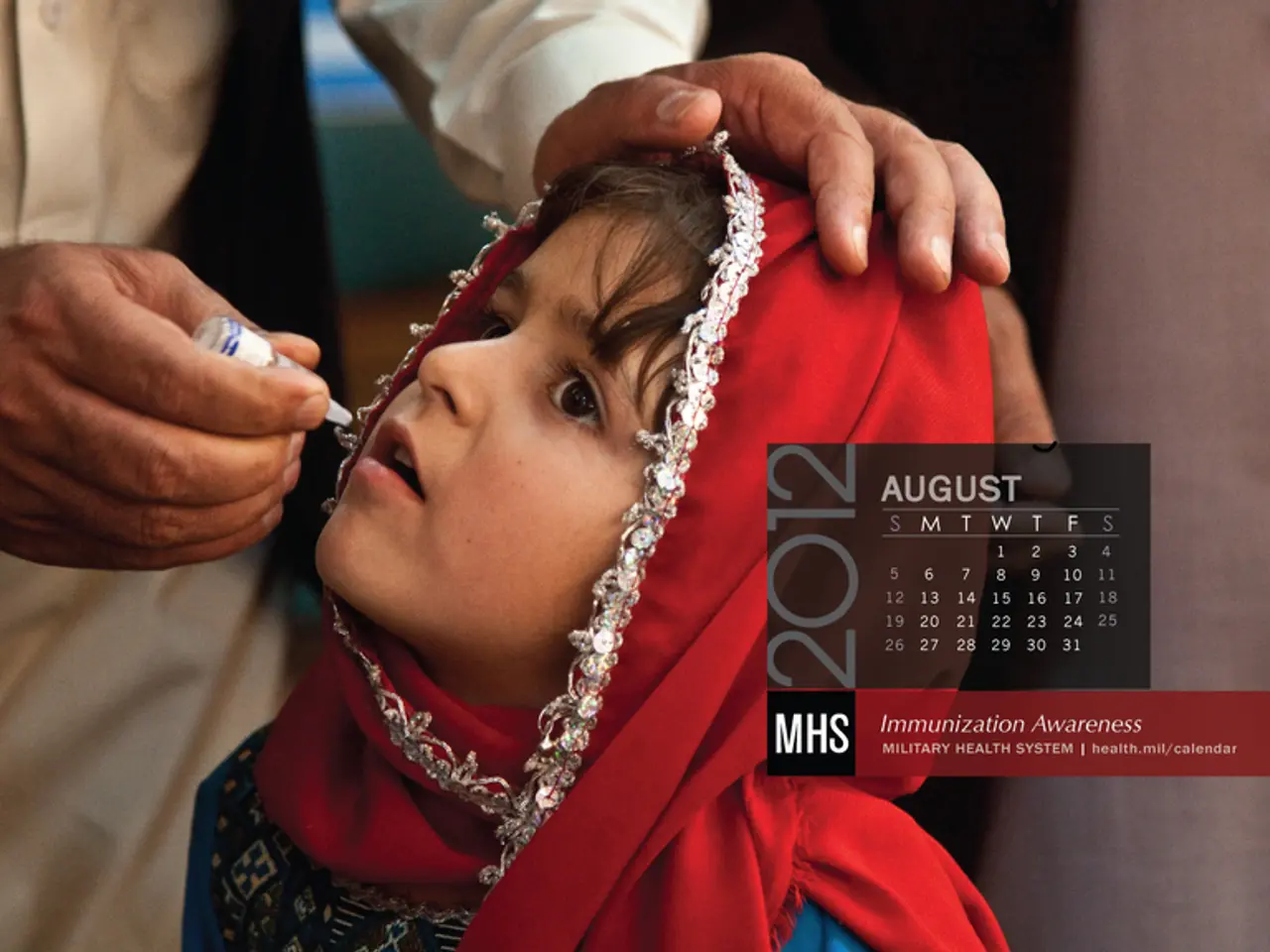Shingles transmission: Is it through physical contact or airborne particles?
Shingles, also known as herpes zoster, is a viral infection that reactivates the varicella-zoster virus (VZV), the same virus that causes chickenpox. Contrary to popular belief, shingles itself is not transmitted through the air.
According to the American Academy of Dermatology (AAD), approximately 1 million cases of shingles are diagnosed in the United States each year. However, it's important to note that the varicella-zoster virus can spread to others who have never had chickenpox or the vaccine, causing chickenpox, which is contagious via airborne respiratory droplets from coughing and sneezing.
Shingles presents as pain, itching, or a tingling sensation, followed by a rash that develops in a strip around the torso or other areas of the body. The rash forms blisters that weep clear fluid and scab over in 7-10 days, typically healing in 2-4 weeks.
People with weakened immune systems, including those with cancer or AIDS, are at greater risk from shingles. To prevent the spread of the virus, those with shingles should cover their blisters and avoid direct contact with others, especially those who are immunocompromised, pregnant, or never had chickenpox.
The Shingrix vaccine is effective at preventing shingles in healthy adults and 68-91% effective among adults with weakened immune systems. The vaccine is a two-dose series, 2-6 months apart, and is available at local pharmacies or through healthcare services. The Centers for Disease Control and Prevention (CDC) recommends the vaccine for adults 50 years and older or those 19 and older with weakened immune systems.
In contrast to chickenpox, shingles is not a sexually transmitted infection and cannot cause genital herpes or cold sores. However, it's crucial to cover the shingles rash, avoid scratching or touching it, and wash hands often to prevent spreading the virus to others.
It's essential to contact a doctor within 3 days of the rash appearing for treatment with antiviral medications, which can help reduce the severity of the disease and the risk of complications such as nerve pain called postherpetic neuralgia (PHN), blindness, pneumonia, hearing problems, brain inflammation, and death.
| Condition | Airborne Transmission Possible? | Transmission Routes | |--------------------|---------------------------------|--------------------------------------------| | Chickenpox (Varicella) | Yes | Airborne droplets, direct contact with blisters, contaminated surfaces | | Shingles (Herpes Zoster) | No | Direct contact only (blister fluid) |
In conclusion, while shingles can be a concerning health issue, understanding its transmission and prevention methods can help reduce the risk of spreading the virus and minimise its impact on public health.
- Despite popular belief, shingles, a form of herpes zoster virus (VZV), is not transmitted through the air but can spread to others who have never had chickenpox or the vaccine, causing chickenpox.
- Approximately 1 million cases of shingles are diagnosed in the United States each year according to the American Academy of Dermatology (AAD).
- The rash caused by shingles forms blisters that weep clear fluid and scab over in 7-10 days, healing in 2-4 weeks.
- People with weakened immune systems, such as those with cancer or AIDS, are at greater risk from shingles.
- To prevent the spread of the virus, those with shingles should cover their blisters and avoid direct contact with others, especially the immunocompromised, pregnant individuals, and those who never had chickenpox.
- The Shingrix vaccine is effective at preventing shingles in healthy adults and 68-91% effective among adults with weakened immune systems.
- The CDC recommends the Shingrix vaccine for adults 50 years and older or those 19 and older with weakened immune systems.
- Unlike chickenpox, shingles is not a sexually transmitted infection and cannot cause genital herpes or cold sores.
- It's crucial to cover the shingles rash, avoid scratching or touching it, and wash hands often to prevent spreading the virus to others.
- Antiviral medications can help reduce the severity of the disease and the risk of complications such as nerve pain called postherpetic neuralgia (PHN), blindness, pneumonia, hearing problems, brain inflammation, and death if contacted within 3 days of the rash appearing.
- In contrast to chickenpox, shingles is not transmitted via airborne respiratory droplets from coughing and sneezing.
- Other autoimmune disorders, multiple sclerosis (MS), atopic dermatitis, and psoriasis are examples of chronic diseases that can compromise the immune system.
- Dry macular degeneration, Crohn's disease, HIV, COPD, diabetes, and migraines are examples of health-and-wellness issues that can also impact one's overall health.
- Science and medical-condition advancements have led to promising treatments for various chronic diseases, such as CBD's potential benefits in managing neurological disorders.
- Awareness and accurate information about the transmission and prevention methods of shingles, as well as other immune disorders and chronic diseases, play a significant role in promoting health-and-wellness.




